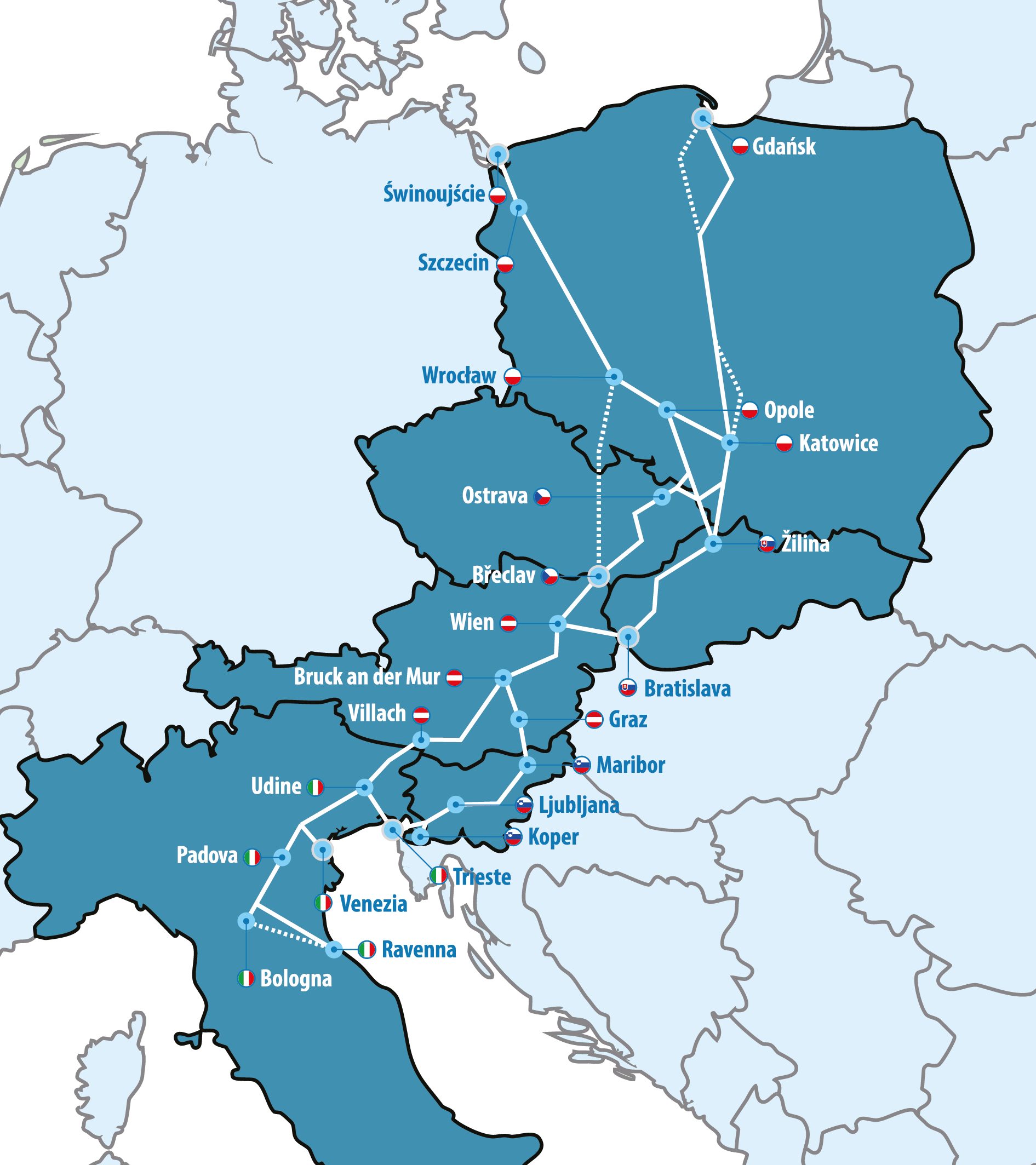


Moving goods between two seas
Welcome to the Baltic-Adriatic Rail Freight Corridor Website
If you are an applicant or a partner in the railway industry, this is the place where you can find all the information you need to access our offer or to cooperate with us.
Who are we?
The Rail Freight Corridor Baltic-Adriatic was established in 2015 as implementation of the Regulation (EU) No 913/2010 on a competitive network for rail freight (onwards “EU Regulation”). The aim of the EU Regulation is to enhance the competiveness of the rail freight transport in order to improve the market share of rail over road. As all RFCs, Corridor Baltic-Adriatic has three main areas of competence:
Market definition and analysis, in particular the carrying out of studies aimed at a better knowledge of the market and the definition of the most suitable products to be offered.
Capacity Management, construction of international rail freight capacity. In addition, the Corridor Baltic-Adriatic contributes to the coordination of temporary capacity restrictions due to infrastructure works.
Traffic and Performance Management, Corridor Baltic-Adriatic monitors the punctuality of the freight trains crossing the corridor, with the aim of improving it and to identify operational bottlenecks to be solved, in order to allow a smoother operation of trains across borders.
Baltic Adriatic RFC runs through six states of Europe, namely Poland, Czech Republic, Slovakia, Austria, Slovenia and Italy and its members are the respective railway infrastructure managers.
Baltic – Adriatic RFC includes 5.200 km of railway lines which connect two seas. At the north of Europe Baltic sea and Adriatic sea at the south of Europe.
For details, please navigate our website.

Events & News
We are glad to announce that the Spring edition of the RAG/TAG meeting is taking … Read More
Baltic Adriatic-RFC is glad to inform its customers and partners that the Transport Market Study … Read More
Baltic Adriatic-RFC is glad to inform its customers and partners that the Corridor Information Document … Read More
Baltic-Adriatic RFC is glad to inform its customers and partners that its Pre-Arranged Paths offer … Read More
RFC Baltic-Adriatic published the update of the overview of the Temporary Capacity Restrictions (TCRs) planned … Read More
RFC Baltic-Adriatic supports the EU-Ukraine Solidarity Lanes.
Please watch a series of videos, about the initiative, … Read More








